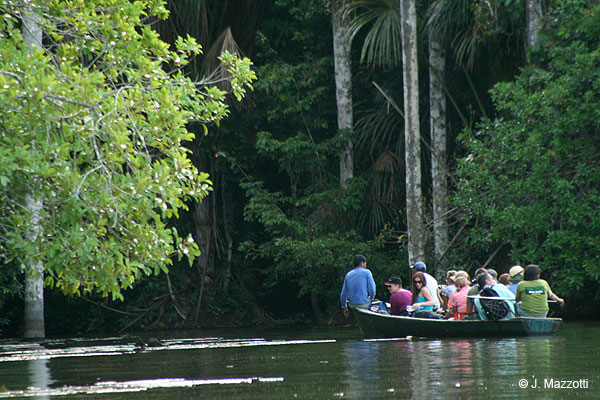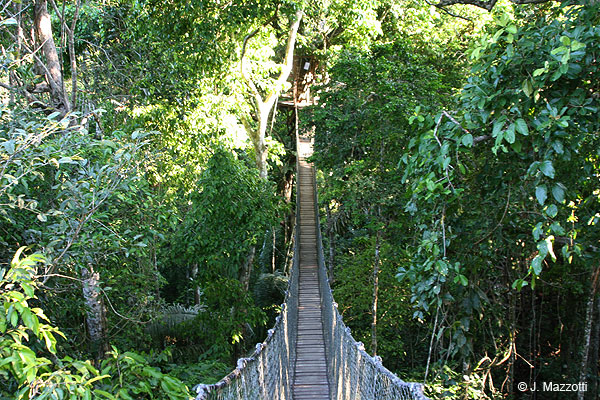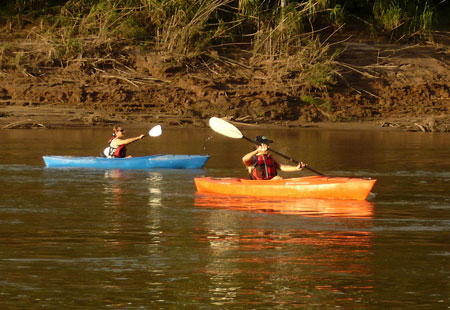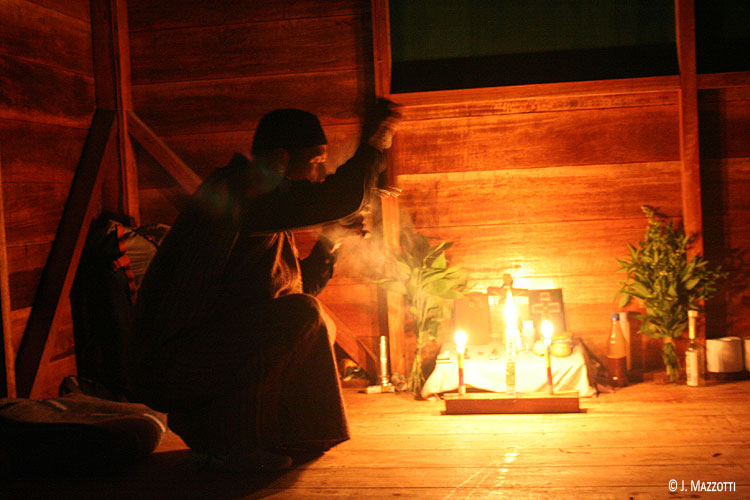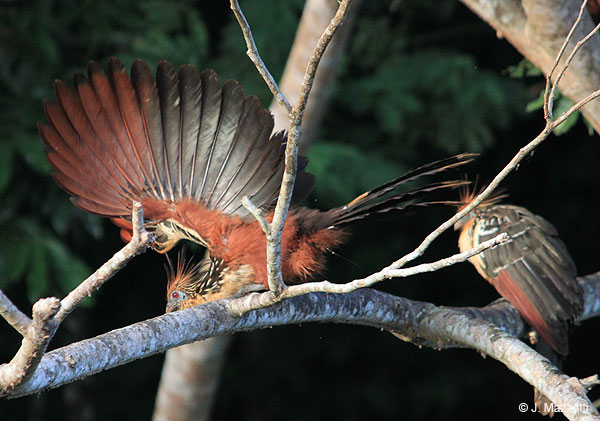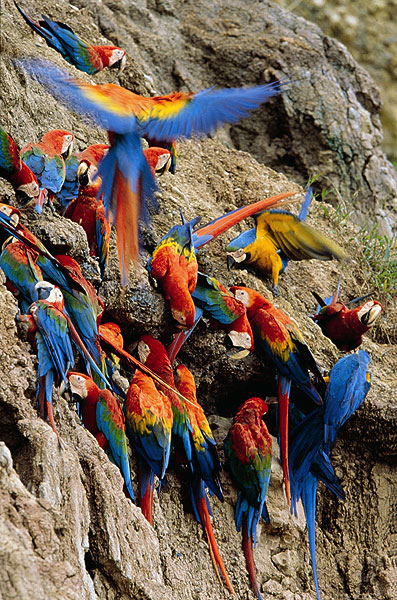Exploring the Jungle of Tambopata
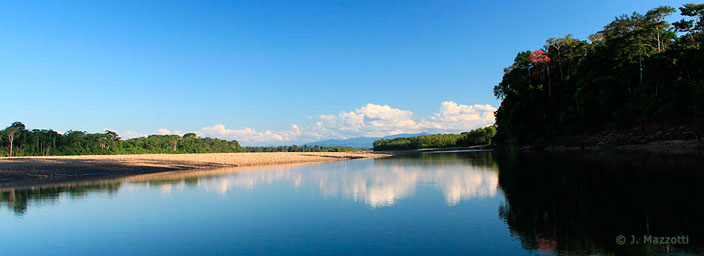
The southern Amazon rainforest in Peru is a paradise of biodiversity, Tambopata National Reserve and another protected natural areas, as Bahuaja Sonene National Park or Manu National Park, in Madre de Dios are a privileged areas that welcomes a diversity of animal and plant species which man has managed to live in harmony for thousands of years.
The Amazon rainforest of Madre de Dios is for fans of bird and wildlife watchers, nature lovers, scientific tourism and those wishing to visit communities. The visit to this area does not require yellow fever vaccine.
Small wonder, then, that wildlife observation in Peru attracts thousands of nature-lovers each year. The Amazon rainforest is the largest wildlife reserve of the Earth, botanical and zoological species abundant in lush landscapes where it can penetrate to encounters with wildlife and nature.
To start an adventure in the jungle you must first reach Puerto Maldonado only 55 minutes flight from Cusco or 1 h 40' from Lima. (Flights from / to Tambopata)
See:
- How to travel to Tambopata
- Excursions and Tours in Tambopata
Exploring the Amazon Rainforest from a Jungle Lodges
To have the best experience, you should stay at least 4 days and stay in one of the many Amazon Jungle Lodges renowned for their high quality service. These facilities operate on some hidden river or on the shores of a lake concealed in the thickness of the rainforest with its constant chorus of sounds and the psychedelic color show in the sky.
The operators of Jungle Lodges will be waiting for you at the airport from your arrival to Puerto Maldonado, and after your visit they return you directly to the airport, or to Puerto Maldonado. Usually they offer services of visits and guided for wildlife encounter to Tambopata National Reserve. Some lodges include visits to Valencia Lake, Sandoval Lake, Gamitana creek or Concepción.
These lodges are usually located in the bank of a Tambopata river or Madre de Dios river, and they have bungalows and cottages that have all the comforts, and others of more restricted services. The lodges have elaborated an excellent plan of activities in the rainforest. Some of these places have research laboratories, orchid nurseries and special places for the observation. Note that being an area in the process of scientific research, it is likely to coincide with the presence of researchers in the lodges and receive information from their investigation work in night talks, as part of his experience in the jungle.
There are rainforest tour packages for families with kids and for families with teenagers. The focus of these tours is to be educational and entertaining at the same time. Packages for kids have a strong educational focus whereas the rainforest tours for teenagers on being very active.
Inkaterra Reserva Amazónica has a canopy that offers a unique experience to explore the forest from above with a biodiversity that can only be appreciated from a suspension bridge between the tops of trees.
Also have integrating experience of Rainforest Expedition that include members E'se Eja native community in the management of their lodges.
From these points you will be able to carry out hikes to the interior of the forest of Tambopata National Reserve. Take rides in canoes by small rivers and water-channels. You also can be in territories that have changed, a little or nothing, in the last 10,000 years and enjoy the magnificence of the jungle, knowing and sharing the same space with thousands of animal and botanical species.
It is possible that you can also visit native communities as part of the activities that the lodge prepare. Some lodges offer alternative experiences as canopy walkways, sport fishing, ayahuasca rituals, and specialized tours as medicinal plants, safari photography, or bird-watching with many endemic birds of this area, the highlight spot is the macaw clay lick.
For fishing enthusiasts there are three Amazonian species considered trophies in the world of fishing, the chambira or payara, the tucunare (peacock bass), and the dorado.
Bird watching in Tambopata
The Tambopata National reserve is a paradise for bird-watchers, 900 species of bird have been discovered in the area. In Bahuaja Sonene National Park has reported the presence of more than 600 species of birds -378 of them in the area of Heath River, which stand between 7 species of macaws, roseate spoonbill (Ajaia spoonbill), the condor of the jungle (Sarcoramphus papa) and the harpy eagle (Harpya harpyja).
Southern Route
The bird-watching route through the Southern region has always been the best known. This circuit is also known as the “Megadiversity Route”. It crosses the rich coastal waters of Paracas and the mysterious Nazca Lines; the Andes through Pampa Galeras (where vicuñas are protected), or through Arequipa and the Colca Valley, or Cusco, the so-called “navel of the world”; the high Andean plateau of Puno and Lake Titicaca until it reaches the plains of Manu and Tambopata National Reserve. This route is noted for having the best infrastructure of the three routes and for being the cradle of the Inca Empire. The main birds that can be seen along this route are those that live in the Polylepis or queñual forests, those birds that visit the clay licks (known as "Collpas"); bamboo specialists and ant-eating birds; as well as other specialist categories. The most emblematic birds are the Inca Wren (Pheugopedius eisenmanni), and the Andean Cock-of-the-rock (Rupicola peruviana).
Birwtaching tours in Tambopata
Macaw Clay Lick in Tambopata
Colpa Colorado - A meeting point for macaws formed on the river banks through an erosion process that encouraged the development of soil rich in mineral salts. At a height of around 50 metres and 500 metres long, it is considered to be the largest in the Peruvian Amazon. Six different species of macaw, parrot and parakeet gather here each morning. The colourful birds flock around the site before beginning the “colpeo” ceremony, eating the clay found in the cliff face that serves as a food supplement. After spending between 25 and 30 minutes at this spot, the birds leave to return the next day. Occasionally, sachavacas (tapirs), ronsocos (capybaras) and squirrels can also be seen here. In the treetops, different species of monkey can be seen, including the capuchin monkey, the titi monkey and occasionally the Peruvian spider monkey.
Located inside the Tambopata National Reserve, 150 km south from Puerto Maldonado (12 hours by boat - Tambopara River).
To visit Colpa Colorado - Macaw Clay Lick: Tambopata Research Center is located in a half hectare clearing in the middle of the uninhabited portion of the Tambopata National Reserve, adjacent to the Bahuaja Sonene National Park and 500 meters from the world's largest macaw clay lick.




